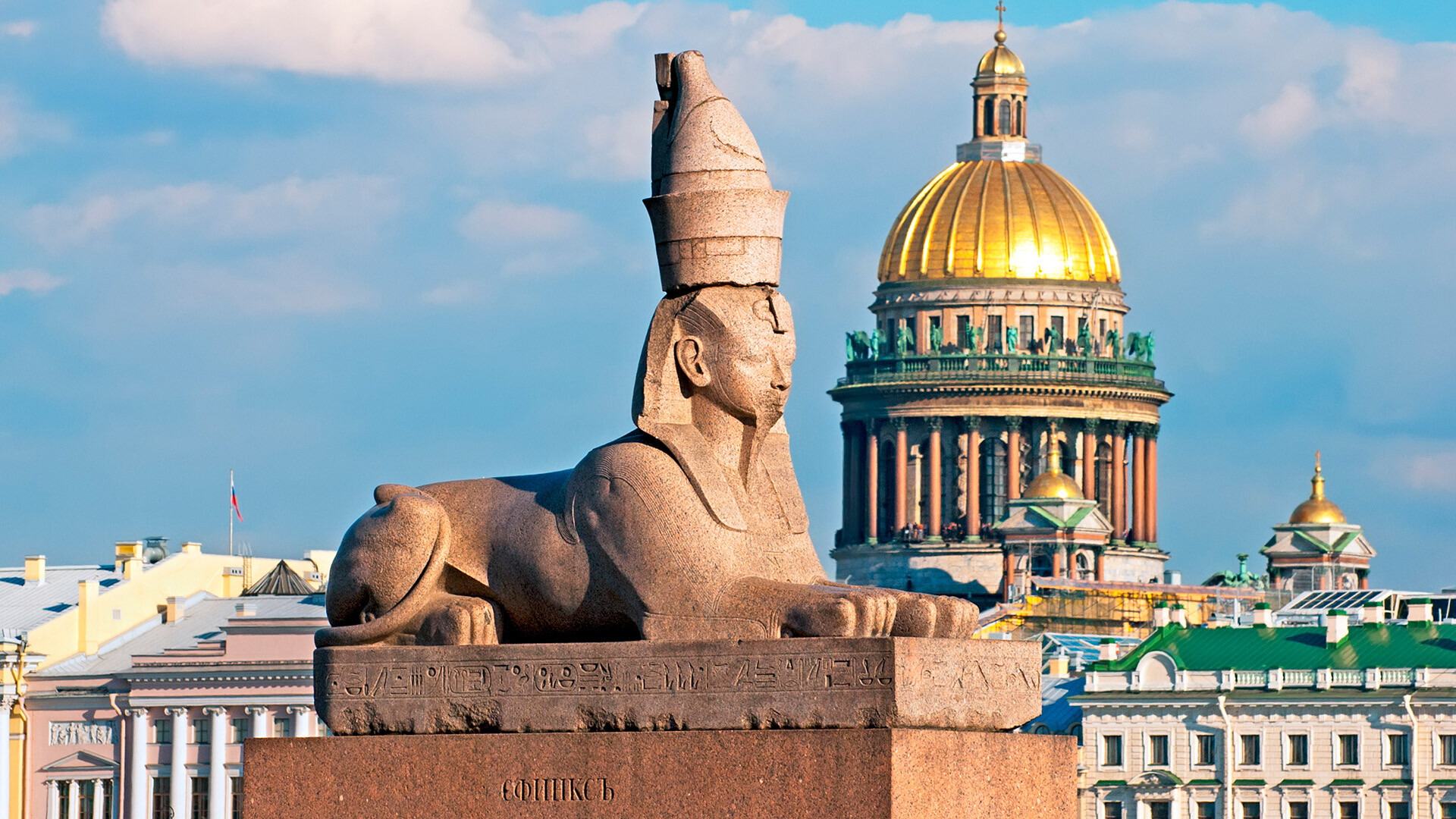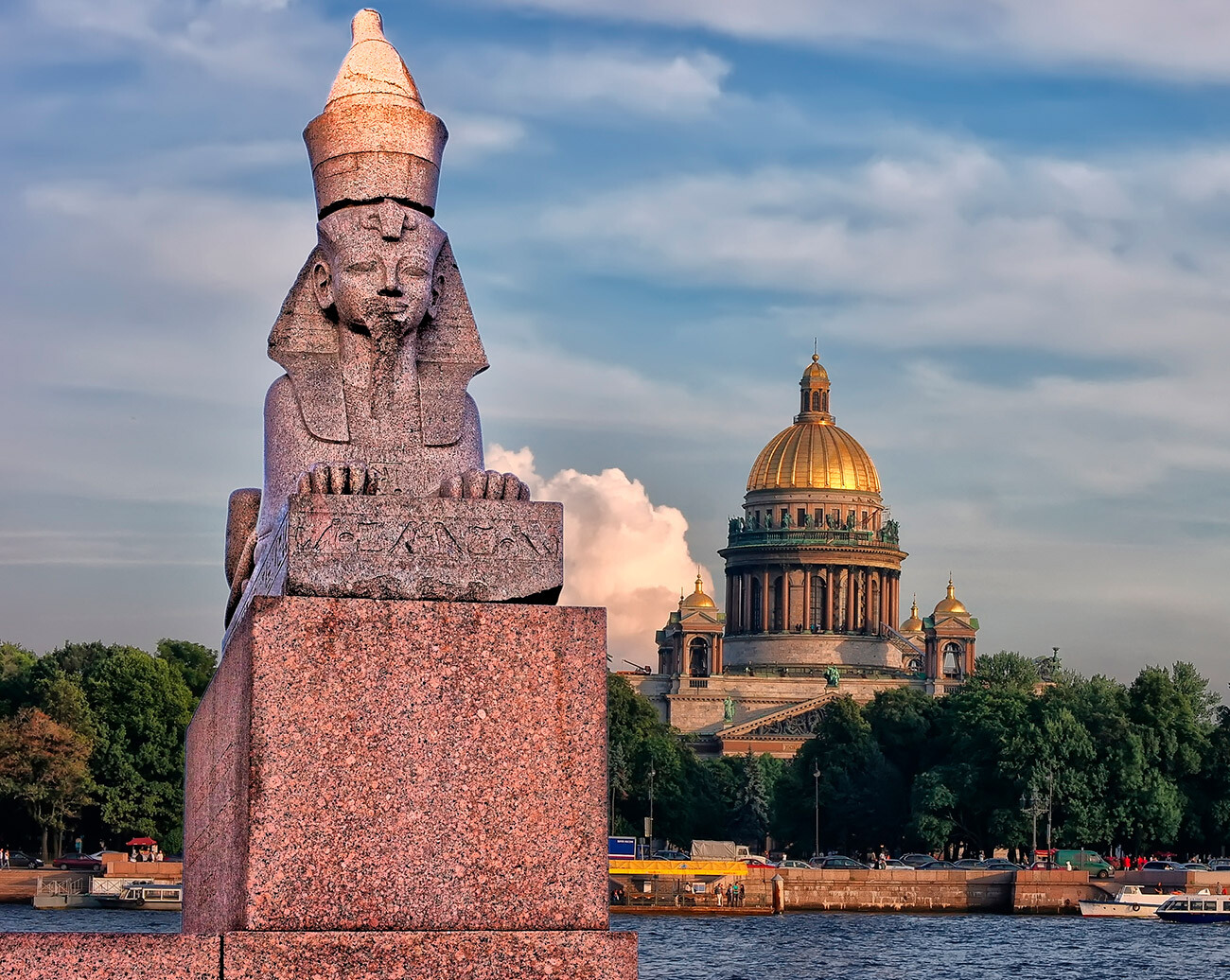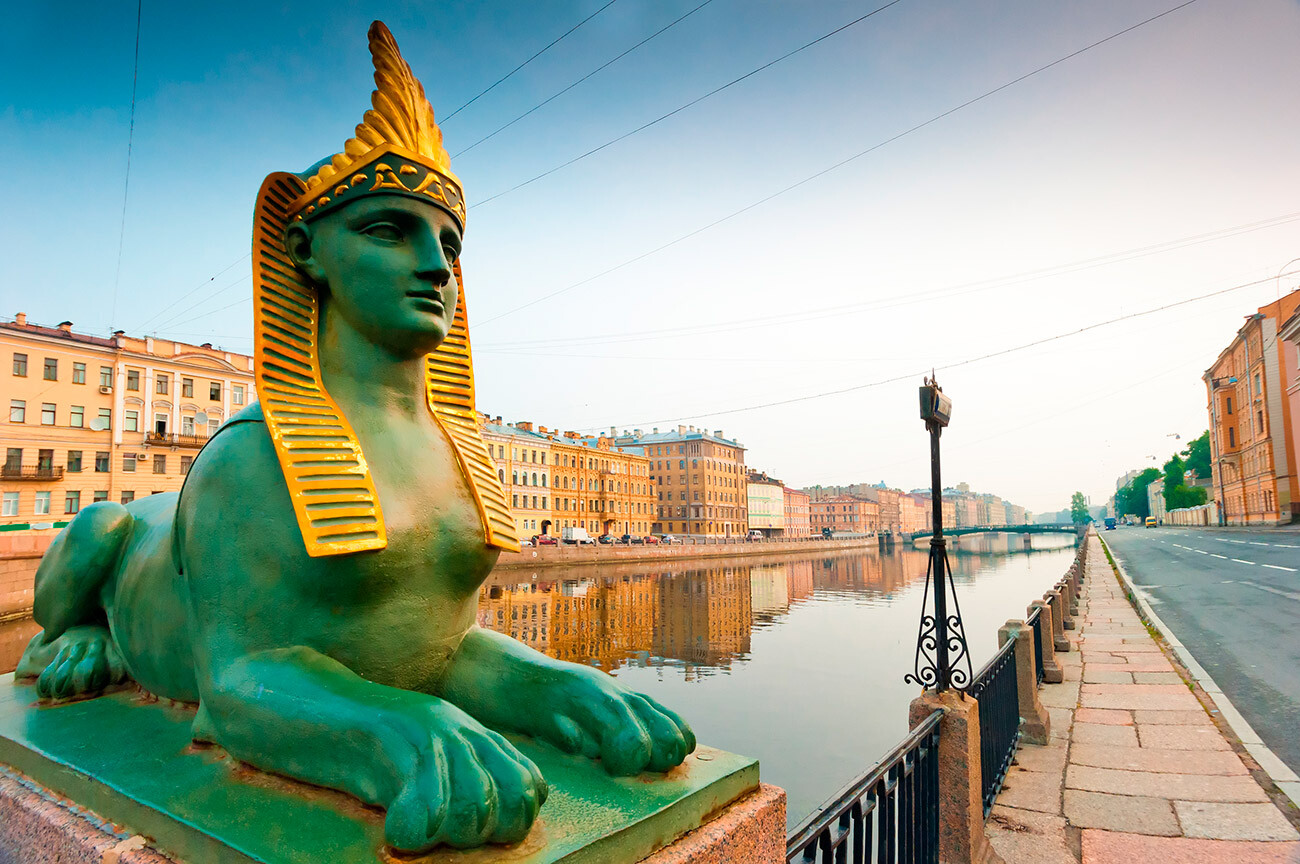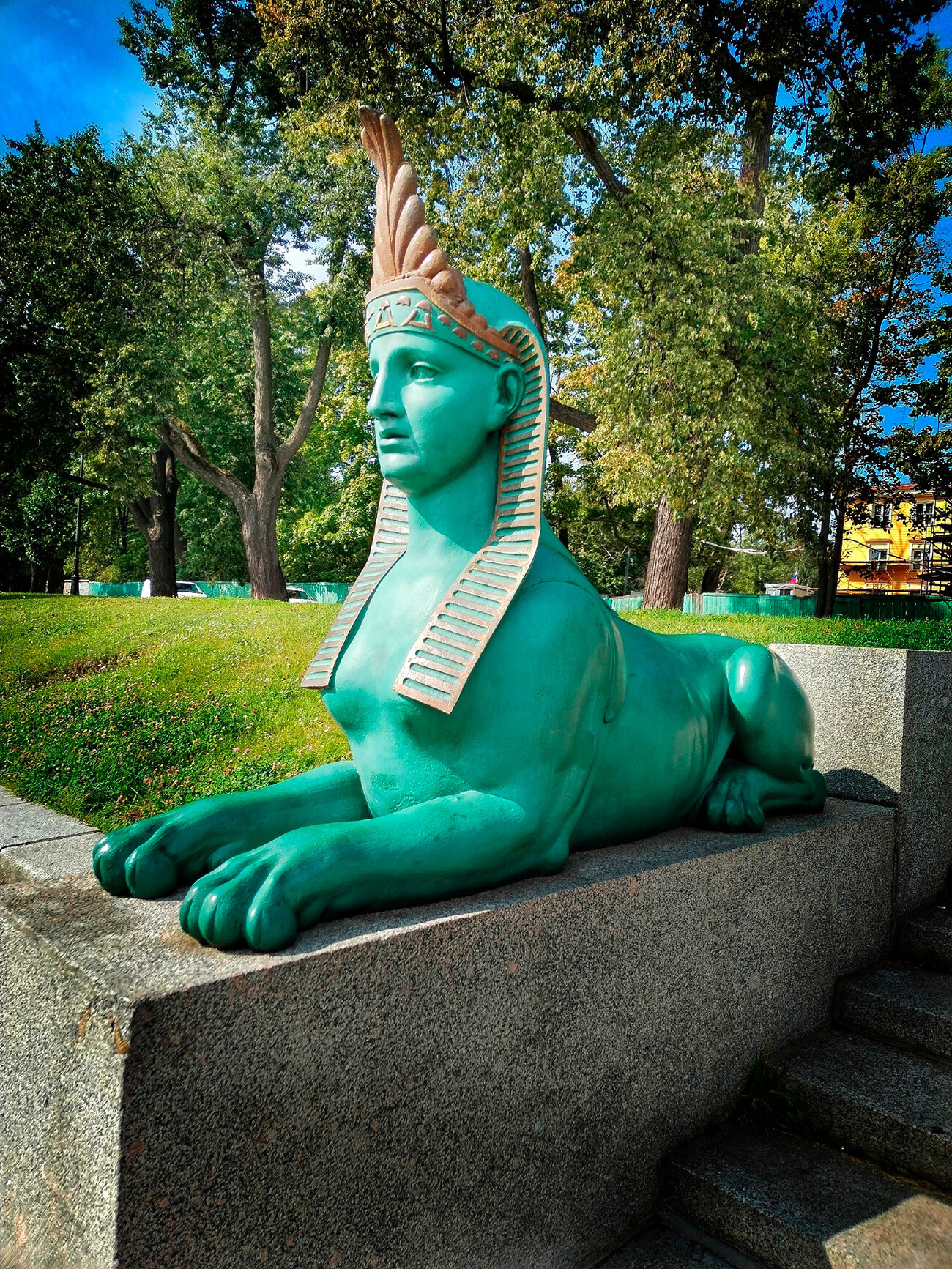

The most ancient lions are installed on the Universitetskaya Embankment. They guard the Academy of Arts. In the 1830s, one of the members of the Academy of Sciences brought them from Alexandria in the wake of his passion for Ancient Egypt. These sphinxes were created more than 3,500 years ago for the funeral temple of Pharaoh Amenhotep III.
The pedestals bear the inscription: "Sphinx from ancient Thebes in Egypt transported to the city of St. Peter in 1832". Hieroglyphs on the statues indicate the full name of the pharaoh.

There are also famous sphinxes on the Malaya Nevka Pier - they have heads of women. This is the work of sculptor Pavel Sokolov from the 1820s. He made several "tests" for the Egyptian Bridge, but, apart from this pair, the rest were lost.
In total, you can count more than 30 sphinxe statues in St. Petersburg. In addition, there is an Egyptian pyramid in Tsarskoye Selo and an Egyptian Gate in Pushkin. This is already a stylization of Egyptian architecture, made in the late 18th-early 19th centuries.

Dear readers,
Our website and social media accounts are under threat of being restricted or banned, due to the current circumstances. So, to keep up with our latest content, simply do the following:
If using any of Russia Beyond's content, partly or in full, always provide an active hyperlink to the original material.
Subscribe
to our newsletter!
Get the week's best stories straight to your inbox